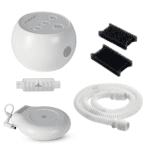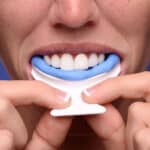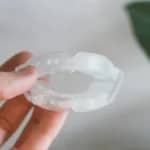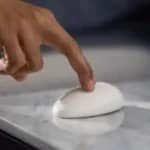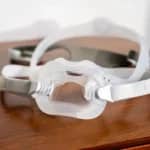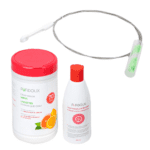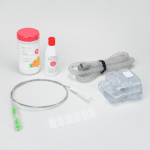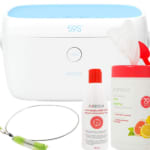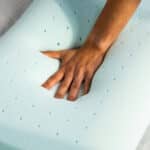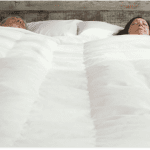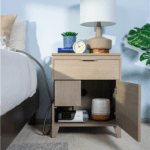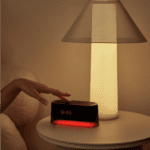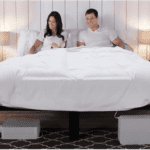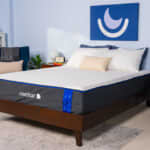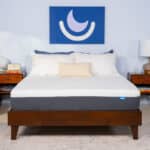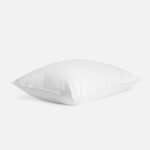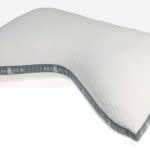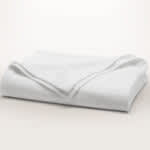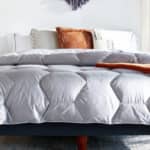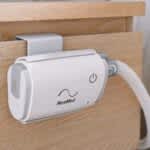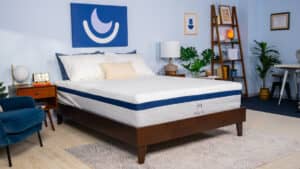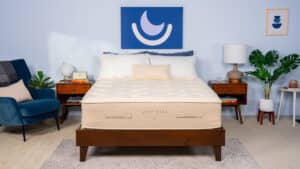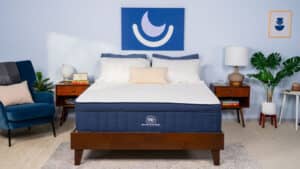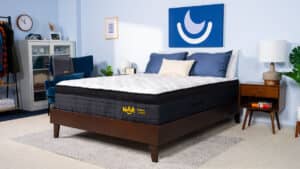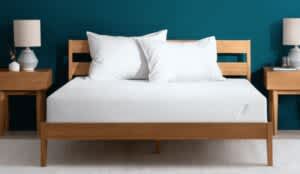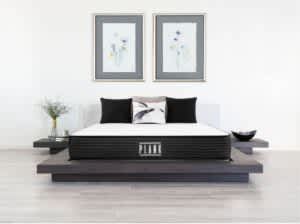With so many mattress options, shoppers may not know where to start. Deciding what type of mattress you want is an excellent first step. All-foam and innerspring models are two popular options, though they vary significantly in their materials and performance.
We’ll cover the differences between foam and spring mattresses to help you narrow down your choices. We’ll discuss their constructions, as well as who may prefer each, so that you can make a knowledgeable decision.
Let Us Help You Find the Perfect Bed
Answer a few questions to find the right mattress for your unique needs
What Is a Foam Mattress?
A foam mattress contains one or more types of foam in its comfort system and support core. It may incorporate memory foam, polyfoam, latex foam, or a combination of materials.
The core sets foam models apart from other mattress types. While hybrid and innerspring models rely on metal coils for support, foam mattresses typically use high-density polyfoam.
Foam mattresses gained widespread attention in the 1990s after the introduction of memory foam models. They became increasingly popular in the 2010s as more and more manufacturers compressed their mattresses for easy shipment.
Foam models are available in nearly any firmness level to suit different position preferences and body types. They also vary widely in price, ranging from around $200 to over $3,000.
How It’s Constructed
Foam mattresses generally include at least two layers, though a handful of budget models use just one. Midrange to luxury foam mattresses often consist of a multilayer comfort system supported by a high-density polyfoam core.
Each layer has a specific goal. The comfort system is responsible for contouring and pressure relief. Since close-conforming foam can trap heat, many all-foam models incorporate comfort layers designed to counteract this effect. For example, copper, graphite, or other gel infusions are intended to pull heat away from the body. The support core provides stability to the mattress and helps it hold its shape over time.
Types of Foam
There are several types of foam, and many mattresses contain more than one variety. Some companies also develop proprietary foam for their models.
Polyurethane Foam
Polyurethane foam, also called polyfoam, is a synthetic material. It is usually springier and less expensive than memory foam. The core of all-foam mattresses is traditionally polyfoam, but any other layer may also use it.
- Standard Polyfoam: This material is more pliable. A foam mattress’ comfort system may use it to cushion the body and relieve pressure.
- High-Density Polyfoam: Since this material is more durable and less prone to lasting indentations, most all-foam models use high-density polyform support cores.
Memory Foam
NASA originally developed memory foam to cushion and protect passengers and pilots during air travel. The viscoelastic synthetic foam softens when exposed to heat, allowing it to contour to the body. Once heat and pressure are removed, it slowly returns to its original shape. Memory foam is common in the comfort systems of foam models.
- Standard Memory Foam: This traditional variety of memory foam molds to the body to relieve pressure. However, it may trap heat.
- Open-Cell Memory Foam: Air pockets inside open-cell memory foam are intended to provide ventilation so that heat can escape.
- Gel-Infused Memory Foam: Interspersed gel beads within the material are engineered to absorb heat and transfer it away from the body.
Latex Foam
Latex foam can be natural or synthetic. This material is buoyant, making it easier to move around on the mattress. Because latex foam is generally more expensive to produce, models that use the material often have a higher price tag.
Although technically a type of foam, mattresses with latex comfort systems and cores are considered a separate category from all-foam models. However, some all-foam models contain one or more layers of latex within their comfort systems.
Who Should Sleep on a Foam Mattress?
Individuals with sharp pressure points often prefer foam mattresses. Since the material conforms to the body, it helps redistribute weight to limit pressure buildup around wider or heavier areas. Side sleepers are especially good candidates, since a foam mattress with the right firmness allows the hips and shoulders to sink in enough to relieve pressure while keeping the spine aligned.
Individuals who share their bed with a restless partner frequently benefit from foam’s strong motion isolation. The materials also tend to be whisper-quiet, which can help reduce sleep interruptions.
Foam mattresses that lack sufficient cooling features may not be ideal for hot sleepers. In particular, standard memory foam’s close hug can trap warmth. Individuals who tend to sit or sleep along the perimeter of the bed also often prefer other mattress types since foam models are more prone to edge sinkage.
What Is a Spring Mattress?
Spring mattresses, also referred to as innerspring mattresses, were developed in the 1870s and quickly became a mainstay of the mattress industry. A spring mattress may contain a thin comfort system, but it is defined by its metal coil core.
Traditionally, spring mattresses are more responsive than foam models. They regain their shape quickly when the sleeper moves, making them bouncier and easier to move on.
Like foam models, spring mattresses come in a wide range of designs, firmness options, and price-points. Budget models start at around $200, while luxury options can cost over $1,500.
How It’s Constructed
Spring mattresses consist primarily of a coil support core. The coil count, type, and gauge contribute to the overall performance.
Historically, innersprings lacked comfort systems and had only a thin layer of padding. Many contemporary innerspring models incorporate a relatively thin foam comfort layer, pillow-top, or Euro-top for cushioning.
Types of Springs
Bonnell coils, offset coils, continuous wire coils, and pocketed coils are the four most common types of mattress springs. They typically consist of tempered steel for greater durability. Occasionally, the steel is twice-tempered to make it even stronger.
Bonnell Coils
Bonnell coils taper in the middle, resulting in an hourglass shape. Helical wires throughout and a thicker perimeter wire fasten the coils together. Bonnell coils are generally affordable and fairly durable, making them common in budget models.
Offset Coils
Offset coils have a similar hourglass shape and helical wiring as Bonnell coils, but the sides of their tops and bottoms are squared. These springs bend like a hinge under body weight, resulting in a more responsive mattress with less noise and motion transfer.
Continuous Wire Coils
Continuous wire coils are made from rows of loose coils, each crafted from one piece of wire. Helical wires hold the rows together. The overall performance is somewhat similar to offset coils, but continuous wire coils usually contour less.
Pocketed Coils
Pocketed coils are cylindrical springs individually wrapped in fabric encasements. The fabric is then glued or sewn together to keep the coils in place. This construction allows the coils to compress independently for responsive contouring.
Who Should Sleep on a Spring Mattress?
Stomach sleepers and individuals who weigh over 230 pounds often benefit from the limited sinkage of a supportive innerspring model. These sleepers generally need the extra support to keep their spines aligned.
Hot sleepers can also benefit from a spring model. The increased airflow between the coils helps keep the mattress cooler throughout the night.
What About Hybrid Mattresses?
Hybrid models are a relatively new addition to the mattress world. They generally combine a foam comfort system and a spring core to balance the best qualities of each.
While some innersprings also incorporate foam comfort layers, a hybrid’s comfort system is thicker for greater pressure relief and motion isolation. The coil core of a hybrid adds bounce, breathability, and edge support.
Variations in construction impact the performance of hybrid beds. The comfort system may include memory foam, polyfoam, latex, microcoils, or a combination of materials. Most hybrid cores use pocketed coils for their contouring and motion isolation, but some use other types of springs.
Because of their balanced performance, hybrids often appeal to sleepers who want some of the benefits of both foam and spring mattresses. Couples often gravitate toward these models because they combine bounce and motion isolation. Hybrids also frequently have more supportive edges, which can increase the usable surface area for those sharing their bed.
Which Mattress Type Should You Choose?
Mattress choices are highly subjective, and the ideal mattress for one sleeper may be uncomfortable for another. Assessing what you’re looking for in a mattress and understanding the differences between mattress types can point you in the right direction.
Foam vs. Spring Mattresses – Pros & Cons
Pros | Cons | |
|---|---|---|
Foam |
|
|
Spring |
|
|
Foam vs. Spring Mattresses – By Sleeping Position
Side Sleepers | Back Sleepers | Stomach Sleepers | Combination Sleepers |
|---|---|---|---|
Side sleepers put more pressure on their hips and shoulders, so most benefit from a model that contours to their curves. Foam mattresses are popular with side sleepers for this reason. | Back sleepers put more pressure on their lower backs. Either spring or foam models can be a good fit as long as they have the right amount of support and firmness to maintain proper spinal alignment. | Stomach sleepers usually fare better with innerspring mattresses. To promote spinal alignment, they need firm surfaces that prevent their abdomens from sagging. | Combination sleepers should pay attention to their primary sleep position. Either a spring or a foam mattress may be appropriate, though changing positions is usually easier on an innerspring model. |


